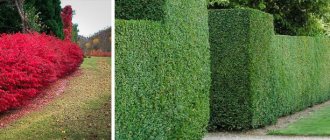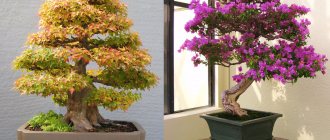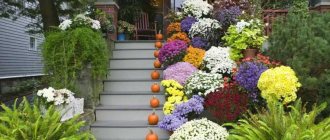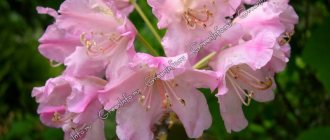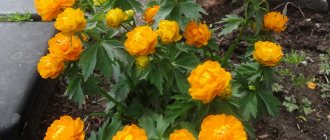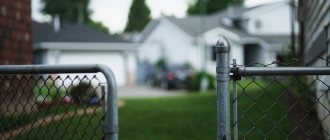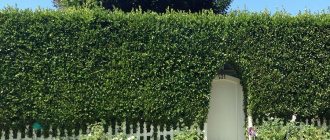The status of exclusivity and eliteness inherent in bonsai does not change today. High prices, many years of formation, labor and love invested in miniature copies of trees and shrubs give them a special magic. And if previously bonsai was considered a status attribute of luxury, today it is spreading more and more, overcoming any cultural and social boundaries. And the choice of plants and bonsai species is also becoming more representative every day. But not all varieties are suitable for those who are just beginning to get acquainted with this amazing art.
Special plants for special owners
Bonsai are not indoor plants, and it would be a big mistake to evaluate them according to the criteria for indoor plants. These are living works of art, a small copy of nature that you can bring into your home. In maintaining and growing bonsai you need to constantly learn and improve yourself. And these special living masterpieces change themselves and change their owners. After all, in order to grow bonsai, you need to learn not only responsibility, but also dedication, peace, and detachment. Sometimes procedures for caring for plants seem meditative (i.e. containing reflections, meditation) - manipulations with plants should be so precise and subtle.
Before you decide to take on the responsibility of bonsai, you need to consider whether you are ready for it. You won’t be able to care for it like you would any other indoor plant. These special man-made miniature replicas, retaining their natural appearance and character, are grown in flat bowls. Both the small amount of soil and the specific growth of the plant require a special approach to watering and fertilizing, and even more so to pruning and shaping. And the growing conditions will have to be selected very carefully. Noble and exquisite, valuable and special, bonsai will require special care from you.
Growing bonsai requires very careful selection of species. There are not dozens, but hundreds of options, but the vast majority of plants on which they experiment with the art of bonsai prefer to grow in the fresh air - literally all year round. Species adapted to indoor cultivation are relatively few in number. And even among them, most plants are crops that require exposure to fresh air in the warm season and very difficult care.
Of course, there are also unpretentious favorites, and crops that are more hardy. The “habit” factor – that is, the conditions in which the plants grew before purchase – is very important. But ultimately, your success in growing bonsai will depend on whether you choose the right plant that initially feels good in the rooms.
Among all the types of bonsai that are common on our market today, we invite you to get acquainted with 6 plants that are better suited for indoor culture than others. These are not always capricious species, but they feel quite good in rooms.
Characteristics of the demands of bonsai plants.
First, consider the following evergreens.
| Chinese juniper. Suitable for growing throughout Russia. An adult plant can withstand frosts down to -20 – -30 °C. A young plant must be insulated for the winter. Suffer from excessive heat and direct sunlight. Normally tolerates moderate drought. |
| White (Japanese) pine . Mature plants are quite frost-resistant. Young bonsai need to be covered down to the lower branches. It winters well in such conditions. Suffer from direct sunlight. |
| Black pine . More picky in Russian conditions than white pine. Will tolerate moderate winters. In severe frosts it is necessary to move it to unheated rooms. Tolerates direct sunlight well. Rather thermophilic. More suitable for growing in the southern zone. |
| Holm oak . An excellent choice for growing in the southern zone and Mediterranean climate. In the conditions of continental Russia, cultivation is possible. In winter, you need to move the plant to a greenhouse. A mature holm oak will be able to withstand a moderately cold winter outside with insulation of the roots. Drought resistant. The most frost-resistant of all evergreen oaks. |
| Spruce . Perfect for growing in the middle zone. It should not be grown in a southern climate - the plant will suffer from heat and sun. Frost-resistant. An excellent choice for garden bonsai! |
| Cypress. Of course, cypress is more suitable for growing in southern climates. However, many species, for example, Arizona Cypress , are very unpretentious and can tolerate frosts even down to −20…−25 °C. In winter, it will require additional protection, and possibly transfer to a greenhouse or an unheated room. Overall, a good choice for the middle zone. |
| Yew berry . An excellent choice for almost any region. Tolerates various natural conditions well. |
| Cedar. They are more demanding of soil than of temperature. Need protection from rodents. A good choice for the middle zone, as well as for the Mediterranean regions. They grow well in Crimea. |
| Myrtle. Quite a heat-loving plant. Does not tolerate prolonged subzero temperatures. Generally does not like sub-zero temperatures, but requires a period of winter dormancy. Possible cultivation in the south of Russia. |
Some deciduous trees will also make good bonsai for the garden. They shed their leaves for the winter and are covered with leaves again in the spring.
| Apple tree. Well suited for growing bonsai. You can choose any apple tree with small fruits. |
| Cotoneaster. Many of its species are perfectly adapted for cultivation in central Russia. |
| Oak _ A good choice for growing bonsai in the garden or park. Quite undemanding. The roots of young plants will need to be protected for the winter. |
| Chestnut. A beautiful, undemanding plant that makes a wonderful bonsai for the garden. For the winter it is necessary to cover the roots. Young chestnut bonsai must be moved to an unheated room during severe frosts. |
| Larch. A difficult plant to form into a bonsai, but worth it. Tolerates continental climate conditions well. |
| Privet. We are accustomed to the fact that privet is an evergreen plant, but there are many deciduous species that are excellent for forming highly decorative bonsai that, with proper care, can grow in a garden in central Russia. |
| Ginkgo biloba. An unfamiliar plant to us, which, however, is able to survive the winter in the middle zone. Of course, it will require more attention than spruce. But it might be worth it! |
Of course, this list is not exhaustive, but now you have an idea of what plants are suitable for forming bonsai in gardens and parks in Russia.
Zanthoxylum
This plant is also known to us as yellowwood and pepper tree, although the fragrant leaves of the plant do not smell like pepper, but like lemon, since zanthoxylums are relatives of citrus fruits. It is this crop that brings the harvest of the legendary Sichuan pepper.
Zanthoxylum is often viewed as a plant for greenhouses only, but in fact, it is one of the most unpretentious types of indoor bonsai.
Pepper tree is an evergreen tree and shrub, most often grown in bonsai as a tree with a single trunk. The plant is characterized by beautiful, dark bark with an unusual golden-grayish tint and a very dense large-leaved crown.
The feathery leaves of Zanthoxylum, which emit a pleasant lemon aroma when touched, are dark green in color and can reach a record length of 15 cm for a bonsai. Zanthoxylum blooms from April to June. The plant produces dioecious golden flowers in small panicles of inflorescences.
For bonsai, you need to ensure stable soil moisture by watering frequently, but with a small amount of water. Rainwater is more suitable for zanthoxylum. When choosing conditions, it is worth focusing on the brightest window sills - sunny places, regardless of the time of year. Zanthoxylum should be protected from exposure to air conditioners or heating devices. The plant does not have to be taken out into the fresh air for the summer.
The formation of zanthoxylum must be carried out constantly, pruning young branches to create the desired silhouette. If the plant has been shaped to a certain shape, then the young shoots are cut back to their original contours, preventing them from growing in length.
In winter, zanthoxylums are kept cool, but the plant cannot tolerate temperatures dropping below 10 degrees Celsius. The optimal temperature value is from 12 to 15 degrees.
Basics of garden bonsai techniques
Let us dwell on the more familiar and widespread technique among Europeans for garden bonsai. Using the technique described below, you can personally obtain in your garden trees of the same bizarre shape that Japanese gardens are so famous for.
- For garden bonsai, a strong, healthy tree is selected so that it is able to withstand all changes and does not die during processing.
- With the onset of spring, all unnecessary branches are then cut off from the tree, leaving only those on which it is subsequently planned to carry out the foliage formation technique.
- After this, all leading shoots and almost all whorls are removed, leaving only a certain number of them in such a way that they gradually decrease as they move from the base of the tree to the top.
- Now, through the use of various spacers and stretchers, the direction of branch growth is controlled. It is important to obtain their uniform arrangement around the axis of the tree trunk.
- The next year, all whorls on the branches are removed. Only the outermost one and the whorl located next to it (if there is one) are left. The idea of this stage is to enhance the growth of branches and foliage at the site of formation of future plates in order to obtain larger plates.
- In subsequent years, those whorls that remain are cut to 1/3 of their length in order to form the intended shape of the plates.
- Maintenance and care mainly boils down to thinning and trimming in order to prevent excessive growth of the plates and their loosening. On average, about six haircuts are performed per year.
Garden bonsai is an art that can take quite a long time to master. Sometimes one minor mistake can immediately cancel out all the work or it will be extremely difficult to correct in the future.
Related article: LG Microwave
Olive Tree
This species is considered one of the easiest to grow unpretentious bonsai. Even for those who grow olive trees as indoor or garden plants, this tree in bonsai form can offer many pleasant surprises.
It is believed that the European olive (Olea europaea) feels better in winter gardens and on staircases, but in the warm season it will decorate any living space.
Bonsai created from European olive is characterized by amazingly beautiful bark. It is an evergreen plant with gray and very strong bark, grayish-green leaves and a beautiful silhouette of branches.
The maximum height of bonsai is limited to 80 cm, although most often olives are sold in the form of 10-20 cm miniatures. Olive in bonsai blooms in July-August.
Olive is grown only in sunny or brightly lit places. But she will need not only intense lighting, but also frequent ventilation and access to fresh air. Bonsai prefers to spend the entire summer outdoors. For an olive tree, you need to maintain constant light soil moisture, but it is more than tolerant of dry air.
Olives are formed all year round, excluding only the period before and during flowering. The basic principle of pruning for this type of bonsai is that all branches above 15 cm in length are shortened to the first, second or third pair of leaves. If desired, an olive tree can be formed not only in the form of an upright growing tree, but also a cascade and a semi-cascade.
The olive tree overwinters in cool conditions, at temperatures from 5 to 10 degrees.
What plants are suitable for growing bonsai outdoors?
The most important thing is to determine what conditions you can offer the tree and what species can survive in those conditions. If you choose trees that are “native” to the region, that will be great! But keep in mind that all types of bonsai must be additionally protected in winter, because they are planted in shallow containers, and the bulk of the root system is not in the soil, like a regular plant, but above it.
If you live in a region with a subtropical or Mediterranean climate , you can afford to grow many types of bonsai in your garden, and your task will not be how to help your bonsai survive the winter, but how to protect your bonsai from heat and intense sun. The best choice for you would be bonsai made from olive, pomegranate, fuchsia, Chinese elm, mulberry, Chinese privet, any maples, swamp cypress, and Mediterranean species of juniper.
Cherry, apple and many evergreen species that naturally enjoy cooler conditions will also grow well if protected from excessive sun.
All native Japanese bonsai species grow well in temperate Subtropical and Mediterranean trees can also overwinter outside if protected from frost, for example in a greenhouse.
In a maritime climate with humid summers, you will face the problem of excessive moisture, and therefore you will need to take care of good soil drainage.
In continental climates with hot summers and cold winters, you will need to provide your bonsai with partial shade in the summer and good frost protection in the winter. Or you can limit yourself to a few hardy local breeds. For growing bonsai outdoors, I would recommend using trees that can withstand the winter in your region.
Ficus microcarpa
This type of ficus is known throughout the world under several other names - ficus bonsai or ficus ginseng. Miniature by nature, easy to shape, these bonsai trees reveal all their beauty thanks to their numerous aerial roots.
Ficus microcarpa is considered one of the best species for beginners to get acquainted with the art of bonsai. This culture feels good both in living rooms and in greenhouses.
Ficus microcarpa is an evergreen tree whose pale, light and shiny, strikingly thin bark contrasts beautifully with its dark, glossy greenery. Microcarp is characterized by an interesting feature: it always seems larger, more voluminous and more magnificent than its actual dimensions. It's all about the thick crown with tightly seated leaves and a massive trunk. Outwardly, this ficus would be no different from everyone's favorite Ficus Benjamin, but in bonsai form it becomes a real star.
One of the main advantages of the plant is the rapid formation of powerful roots and trunk, thickenings on the aerial roots. Lanceolate or lanceolate-oval, broadly or narrow-leaved forms of ficus retain an unchanged feature - dark green, rich color.
Interesting on the topic:
10 remarkably beautiful annual vines that are worth...
Jan 15, 2022
I grow lush bushes of ground cover roses - gorgeous...
Jan 15, 2022
Growing microcarpa bonsai is not at all difficult. The plant likes a stable room temperature almost throughout the year, and if you avoid excessive heat or sudden changes, problems will not arise. The higher the air humidity, the more decorative the leaves. Watering is carried out with restraint; in the summer, not only the classic method is used, but also immersion of all the roots and trunk of the plant in water.
For ficus microcarps use settled or rain water. Like all bonsai, ficus microcarpa will prefer to spend its summer outdoors. True, this plant can only be grown from May to September, when even at night temperatures do not drop below 15 degrees.
Ficus trees are most often grown in an upright form: this is the only way that picturesque formations of numerous aerial roots will eventually form around the main trunk and it is possible to give the trunk itself a bizarre shape. Ficus trees are well shaped by both regular trimming and wire trimming.
Ficus microcarpa prefers to overwinter indoors, but does not like heat or proximity to heating devices. The optimal temperature is not lower than 15 degrees and not higher than 20 degrees Celsius.
The true beauty of the art of bonsai
Yamamoto Junsan, author of many books on bonsai, says the following:
— The true beauty of the art of bonsai lies in the fact that the grandeur of nature contained in the landscape is expressed here with the help of one miniature composition. Looking at an excellent bonsai, we, without noticing it, direct our gaze from bottom to top, as if a life-size tree was growing in front of us. Admiring it, we can feel how the seasons change, hear the rustling of leaves in the wind, feel the majestic spirit of the soil - a picture of all the beauties that nature shows us suddenly opens up before us.
In an epoch-making work written in the nihonron
(“theory of Japanese culture”) and entitled “The desire for miniaturization as a feature of the Japanese national character (*6)”, the following is said about the essence of the art of bonsai: “We are considering not just a tree in miniature, but a certain sculptural composition, looking at which we can evoke in your imagination such elements of this sculpture as, for example, sea waves and blows of salty wind, which gave the plant its magnificent, unique shape...”
(from left to right): thuja, pyracantha, Maak's euonymus, cryptomeria
This book says the following about the characteristics of haiku poetry: “A haiku is not just a short poem. What makes this genre special is not its brevity, but its unique aesthetics, which can be described as “the creation of a miniature giant,” manifested in the desire to compress the huge, ambiguous world spread out around it to a tiny size.” Needless to say, these words are also suitable for describing the aesthetics of bonsai.
Erecia parvifolia
This plant is rightfully considered not only one of the most spectacular, but also the largest bonsai.
Aerial roots, light bark, a fancifully curving trunk and pubescent leaves highlight erectia (Ehretia microphylla, synonym - small-leaved carmona, Carmona retusa) in any collection. This bonsai is grown in winter gardens and in all types of living rooms.
Erecia smallifolia is an evergreen tree with a height of 15 to 80 cm that requires some effort to contain its size. But karmona has many other advantages. The bark is light, brownish-gray, with very beautiful cuts that emphasize the bend of the trunk and branches. And the dark leaves of the erection, covered with white hairs at the top of the leaf blade, seem both miniature and massive at the same time.
Carmona, unlike many other trees used for bonsai, continues to flower almost all year round. And you can endlessly watch the metamorphoses - from tiny buds to snow-white flowers, and then to green, gradually turning red berries.
The most difficult thing in growing carmona is maintaining high humidity. And the requirement only for uniform soil moisture also does not make the growing process easier. But this tree can be grown and “watered” by immersion in water (directly with the trunk), and it is better to apply fertilizers in this way, immersing the plant in a weak solution.
Erecia feels great indoors, but from May to September it is better to find a place for it in the fresh air. Ventilation of rooms is very important, as is intense lighting.
This type of bonsai needs constant containment. The plant is bulky and tends to return to its natural size. Therefore, the carmona is not so much sheared as it is wrapped with wire for more aggressive containment. Carmona is very impressive not in its upright form, but in its hanging “mountain” form and cascade.
Carmona can overwinter not only in cool conditions. Acceptable air temperature values are from 12 to 22 degrees. So this is one of the few bonsai that do well indoors all year round.
Bonsai in the interior
Whatever the decorative Japanese tree, it will fit perfectly into any room. Moreover, it is not at all necessary to make the entire interior style Japanese. Such an ornamental plant will easily fit into a classic living room or a newfangled kitchen. A veranda with a whole greenhouse containing a huge number of colorful ornamental plants will look original.
To prevent this decorative element from seeming lonely, in addition to it, you can place other plants in the room or hang paintings depicting nature on the walls.
Bonsai will look great in a room where the maximum amount of natural materials is used in decoration and furniture.
If the plant has its own special color, it can be supported by other decorative elements, such as sofa cushions or wall decoration.
It is quite important for the overall perception of the picture not only the plant itself, but also the pot in which it grows. Often it is this that is the excellent link between the plant and the overall style of the room.
A Japanese bonsai will look original in combination with a chandelier made to look like a tree branch. This floral theme can be continued with wall decor.
Undoubtedly, bonsai will fit most harmoniously into a room with a Japanese-style interior. In this case, the plant theme can be continued on the screen inherent in this direction.
Japanese euonymus
The favorite garden shrub, Euonymus japonicus, does not lose its charm in bonsai. Of all the types of euonymus, the Japanese euonymus creates the most attractive silhouettes, forming charming single-trunked or multi-trunked living sculptures.
Japanese euonymus is used for living rooms, greenhouses and staircases with foyers.
Japanese euonymus in bonsai form is represented by small-leaved and variegated forms; yellow-leaved aurea are also often found. This densely bushy plant with dark bark allows the formation of multi-stemmed trees, but even when creating a solitary “tree”, the euonymus surprises with its grace and complexity of silhouette.
The bark is dark, matte, very attractive, the lower part of the shoots is usually bare, and the crown seems weightless and very light. The height of euonymus ranges from 15 to 50 cm. The leaves are typical for this plant, oval-lanceolate, glossy, with dark, variegated or bright colors. This type of bonsai blooms in June-July.
Good lighting is necessary for euonymus regardless of the time of year. Euonymus prefers fresh air from May to October. In this case, the plant can only be placed in protected places. The Japanese euonymus does not tolerate complete drying out of the substrate, but watering must be done very carefully (light, rather frequent and meager watering is preferable).
The dense bushiness in bonsai form is the result of hard work. Young branches of euonymus tend to stretch, so they are pruned often, stimulating branching. If you want to create a more interesting silhouette, this type of bonsai can be rewound with wire.
Japanese euonymus bonsai overwinter only in coolness, but relative coolness. The minimum temperature value is 10 degrees Celsius for varieties with uniform color and 15 degrees Celsius for variegated and originally colored bonsai.
Choosing plants for nivaki and garden bonsai?
We list the most common species: Chinese juniper, scaly juniper, black pine, multicolored pine, Scots pine, yew, winged euonymus, European euonymus, multileaf elm, rough elm.
As you can see from the above list, most of the plants are conifers.
Syzygium paniculata
One of the most beautiful and densely growing evergreen giant trees, syzygium (Syzygium paniculatum) in bonsai form offers an idealized, flawless miniature tree.
The natural density allows you to keep pruning to a minimum, and the fragrant flowering and fruiting of syzygium is a pleasant bonus. Syzygiums can be used for living rooms, and for winter gardens or staircases.
Syzygiums are evergreen trees with lanceolate or elliptical, surprisingly simple and beautiful leaves that amaze with the color of their bark. Young shoots of the plant are copper, glossy, gradually repainted to match the tone of the trunk and old shoots - matte beige-brown, easily recognizable against the background of any other indoor bonsai.
Syzygium shoots are densely leafy, which creates the feeling of a fairly massive crown. But the most amazing thing Syzygiums prepare for the beginning of summer: in June, fragrant, unusually “fluffy” flowers with long stamens in inflorescence-tufts bloom on tiny bonsai from 15 to 50 cm in height, and then purple or pink fruits are set on them.
For syzygium, the most important thing is bright lighting. This plant will need it not only during the warm period, but also in winter. Syzygiums require frequent ventilation and exposure to fresh air from April to October. Otherwise, the requirements for stable substrate humidity and at least average air humidity are no different from other indoor bonsai.
The formation of syzygium is tolerated very well. But pruning can be done at any time, except for the period from April until the end of fruiting. These bonsai, once initially formed, are often grown with minimal pruning as the plant bushes on its own.
Syzygium prefers to overwinter in cool conditions. Comfortable temperature range is from 10 to 13 degrees. But there is one significant “but” in this rule: syzygiums tolerate winter quite well even at normal room temperatures, if only they are provided with bright lighting.
Niwaki garden bonsai - photo gallery
By competently practicing garden bonsai, you will receive true pleasure from communicating with nature, and subsequently you will be able to admire for yourself and amaze the eyes of visitors to your garden with the results of your own labor. Here is another photo of using nivaki in landscape design at the dacha or in the garden of your country house:
How to grow bonsai yourself
Decide in advance on the method of growing indoor bonsai - from seeds or cuttings. Seeds can be purchased or taken after they are fully ripe from a suitable plant in a park, forest or garden. Planting takes place from spring to early autumn:
- In the fall, sow hard-shelled seeds in a flat container with damp sand and place the container outside throughout the winter. The top layer of seeds will crack due to frost, and shoots will appear in the spring. When sprouts appear, water them. Sow soft-shelled seeds in a box and keep them at a temperature of about 0 degrees.
- In June, cut branches 5-7 cm long, place them in a substrate, water them, cover the pot with a glass jar or film, and place them in a warm place with diffused light. When young shoots appear, remove the jar or film. Please note that coniferous cuttings develop roots within a few months or a year.
Bonsai care
Create an indoor bonsai using:
- concave cutters - for cutting wire, branches for the trunk;
- convex pliers - they safely cut convex elements on the trunk, branches, roots;
- special nippers or scissors for removing roots - they have a curved head;
- tweezers with a curved tip - for removing buds, foliage, pine needles.
Choosing a pot
Root the plant in a large, deep pot. This way the trunk will actively develop. Form the bonsai tree for about 2 years, then move it to a permanent container. The container should be of a simple, laconic shape, harmoniously combined with the composition. Buy a container for the seedling based on the chosen style of your indoor bonsai:
- inclined trees - heavy, stable pots made of clay, ceramics;
- dense, branched crown, several trunks - wide, shallow containers;
- open horses - tall, narrow containers;
- cascade style - narrow shallow pots.
How to choose a bonsai pot size
Basic rules for choosing a pot:
- The height of the walls should not be less than the diameter of the trunk.
- The width is equal to 2/3 of the length of the indoor plant.
- There must be drainage holes.
Soil preparation
Choose ready-made mixtures very carefully. Do not buy peat compounds with garden fertilizers. It is better to purchase a minimally nutritious, permeable substrate processed by California worms. Use scanty soil that prevents the active growth of indoor bonsai:
- For coniferous trees, take 6 parts clay and 4 parts sand.
- For deciduous soil, a mixture of 7 parts clay soil and 3 parts sand soil is suitable.
- For flowering plants - 6 parts clay soil, 1 part leaf humus.
Preparing the soil for growing bonsai
Prepare the soil in April, after the ground has thawed. Universal mixture: 1/3 part clay, ½ part peat or rotted leaves, ¼ part sand and vermiculite, small stones. Before use, rinse the sand thoroughly, calcine the soil for about an hour in the oven at a temperature of 100-120 degrees or boil for half an hour in a sieve and water.
First transplant
Rooting is carried out in a shaded place:
- Trim vertically growing roots. With this formation, the growth of the tree slows down.
- Plant the bonsai in the substrate, compact it, water it.
- Arrange a quarantine for the plant: choose a slightly shaded place for the pot, isolated from other plants.
Bonsai transplant

